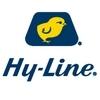Explore all the information on
Poultry nutrition - Other additives
Alternative feed additives have promising importance in broiler production due to the ban on the use of certain antibiotics. The most used antibiotic alternatives in broiler production are phytogenics, organic acids, prebiotics, probiotics, enzymes, and their derivatives. Antibiotic alternatives have been reported to increase feed intake, stimulate digestion, improve feed efficiency, increase growth performance, and reduce the incidence of diseases by modulating the intestinal microbiota and immune system, inhibiting pathogens, and improving intestinal integrity. Simply, the gut microbiota is the target to raise the health benefits and growth-promoting effects of feed additives on broilers. Therefore, naturally available feed additives are promising antibiotic alternatives for broilers.
Spray-dried blood plasma is a highly digestible protein source containing immunoglobulins, growth factors, biologically active peptides, enzymes and other factors that are biologically active in the gut. Bovine SDP has been shown to produce improved growth rate, feed intake, feed efficiency and produce superior breast yield in broilers. Porcine SDP has been used in piglet starter diets to improve feed intake, growth rate and feed efficiency. There is limited...
Comments : 16
Recommendations: 0
In antibiotic-free broiler production systems, nutritionists can support the gut ecosystem with the judicious use of highly digestible diets for the young bird. Varying degrees of antibioticfree production (ABF) of chicken are now imposed by government agencies or major retailers or are being voluntarily undertaken by integrated broiler companies. ...
Comments : 0
Recommendations: 1
Use of dietary plasma in pre-starters for broilers may improve growth and health. Early nutrition of the broiler chicken is becoming more important as more knowledge is gained about the positive correlation between early growth rate and market weight and also the impact early growth and development have on the uniformity of carcass weight and composition. All of these factors become...
Comments : 0
Recommendations: 0
DDGS can be a good alternative ingredient in diets for broilers. Its use in combination with a multi-enzymatic complex, combined with an extra dose of phytase, can help to achieve optimal performance. A few trials, conducted in Argentina, are described here. Distillers Dried Grain with Solubles (DDGS) is the result of extracting ethanol from grains through...
Comments : 0
Recommendations: 0


A Natural Choice for Growth Enhancement in Farm Animals - 3 ESSDENDIS
Suggested link
1. Factorially designed experiments versus response surface methodology. A conventional experimental approach investigates the effects of one independent variable while keeping all other variables constant. This approach faces two challenges (i) it is only valid when the underlying principles linking cause and effect are known with some certainty; (ii) variables...
Comments : 6
Recommendations: 1
Is there any relationships between a high content of free fatty acids in a source of an oil for broilers o layers with less Metabolizable energy? More free fatty acids less energy?. Which could be the limit? Y reaad that a yellow grease with maximimun of free fatty acids of 12% expressed as oleic acid is the same as a soya oil? ...
Comments : 2
Recommendations: 0


The Impact of Dietary Electrolyte Balance on Male Broiler Performance Offered Reduced Crude Protein Diets
Suggested link
Introduction. The gastrointestinal tract (GIT) is developmentally very active in the early period posthatch in poultry species (Uni et al., 2000). The intestinal crypts that form on the day of hatch become defined in the first 48 to 96 h and continue to grow rapidly during the first 7 d (Uni et al., 2000). The intestinal villi increase significantly in diameter and length during...
Comments : 0
Recommendations: 0
I ntroduction. Between 2000 and 2010, the production of table eggs in the Dominican Republic (DR) nearly tripled, increasing from 58,000 to 150,000 tonnes (58,000,000 to 150,000,000 kg) (21) . The increase is partially due to a higher average consumption of eggs in the DR (10.3 kg per person) than the world average (8.3 kg per person). The DR also exports...
Comments : 0
Recommendations: 0
Poultry colonized with Campylobacter species are a significant source of human food-borne illness. The therapeutic use of the medium chain fatty acid caprylic acid consistently reduced enteric C. jejuni colonization in chicks by 3 to 4 logs in three separate trials. These results support caprylic acid’s potential to reduce Campylobacter carriage in poultry. Campylobacter species...
Comments : 0
Recommendations: 0
1. Introduction. Sorghum is used, either partially or entirely, as the cereal grain base in Australian pig and poultry diets but it has been associated with sub-optimal broiler growth performance (Selle et al., 2010, Liu et al., 2013). Cereal grains of different varieties and from different locations may be blended into poultry diets but varying the inclusion rate of one feed...
Comments : 4
Recommendations: 1
The 2016 Poultry Nutrition & Milling Seminar is scheduled for April 13-14, 2016. The Alabama Feed & Grain Association and the World’s Poultry Science Association are proudly cosponsoring the meeting, which will feature a variety of distinguished speakers that will discuss feed-related issues and challenges currently faced by the poultry industry & feed producers. The meeting will be held at beautiful Lake Guntersville State Park Lodge in Guntersville,...
Comments : 1
Recommendations: 0
Has anyone ever tested algae (with Omega 3) as a poultry feed supplement?...
Comments : 2
Recommendations: 0
Hi everyone, I am new to this forum and I have a query, I have formulated my own feed for broiler chickens but I am not very confident ,can I request you people to look at my formula and advise me about its composition. this is the formula Final Pre starter in Kg Final starter in kg corn 61.8 64 soya 27 24 mbm 5 5 palm oil 3.5 4 dcp 0.75 0.5 limestone 1 1.5 previt mix 0.1 0.1 trace min 0.1 0.1 Nacl 0.25 0.4 lysine 0.05 0.05 methionine 0.35 0.25 salinomycin 0.05 0.05 doxy 0.05 0.05 total 100...
Comments : 0
Recommendations: 0
INTRODUCTION Fenugreek (Trigonella foenum-graecum L.) is a well known medicinal plant that grows in nature and mainly cultivated in India, Pakistan and China. Fenugreek seeds have many therapeutic effects like hypoglycemic, anthelmintic, antibacterial, anti-inflammatory, antipyretic, and antimicrobial properties (Bash et al, 2003). It contains neurin, biotin, trimethylamine which tends to stimulate the appetite by their action on the nervous...
Comments : 7
Recommendations: 1
.jpg&w=3840&q=75)

Candidate Genes Associated with Survival Following Highly Pathogenic Avian Influenza Infection in Chickens
Suggested link
If we often hear that in the modern Man, olfaction, our most primal sense, has also became our worse sense, it is highly developed in most animals, and often an essential part of their survival. The sense of smell warns them of danger, help them to find food and discriminate toxic from nutritious plants for example. Olfaction is also involved in reproduction, from matting to the recognition of one's own offspring. Cattle and, to a higher degree, swine have a very sharp sense of smell, as...
Comments : 4
Recommendations: 0
Introduction. Antibiotics are generally used in the poultry industry to prevent poultry pathogens and diseases as growth promoters. However, using of antibiotic in the diet caused the development drug-resistant bacteria (Edens, 2003), drug residues in the bird's body (Pelicano et al., 2004) and imbalance of normal microflora (Barton, 2000). As a result, there is an increasing...
Comments : 0
Recommendations: 0
Introduction
Olive leave extract was effective in minimizing the oxidative stress which was induced with the advance of age, specially for plasma cholesterol, triglyceride, thiobarbituric acid reactive substances (TBARS), superoxide dismutase (SOD) and glutathione s-transferase (GST). This experiment was conducted to study the effect of dietary olive leave powder (OLP) on performance, immunological and biochemical...
Comments : 4
Recommendations: 0
How does high crude protein levels in feed of 48 weeks laying birds leads to over 61% Mortality related issues of prolapse with all other factors such as enteric diseases, lightening and debeaking are in check? ...
Comments : 44
Recommendations: 0
I need someone who can help me formulate feed for my layers and boilers. Thanks ...
Comments : 1
Recommendations: 0
I. INTRODUCTION Sorghum is used, either partially or entirely, as the cereal grain base in Australian pig and poultry diets but it has been associated with sub-optimal broiler growth performance (Selle et al., 2010, Liu et al., 2013). Cereal grains of different varieties and from different locations may be blended into poultry diets but varying the inclusion rate of one feed ingredient will spontaneously change inclusion...
Comments : 0
Recommendations: 0












.jpg&w=3840&q=75)















